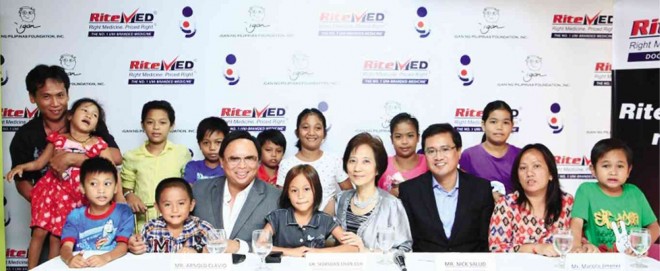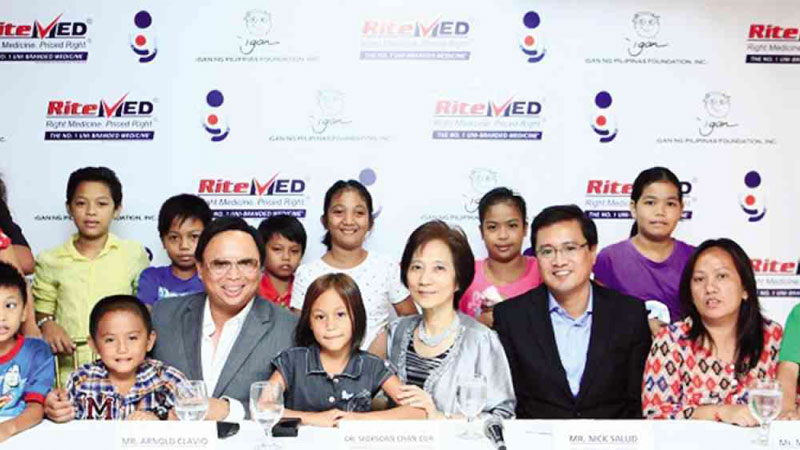
Tristan Jimenez looks like your typical third-grader. Sprightly and playful, no one would have guessed the scrawny little boy with a big smile on his face was diagnosed with diabetes when he was 2 years old.
Like everyone who lives with type 1 diabetes, the young Jimenez endures needles and pricks every day like a man. His innocent soul grappled with the harsh reality of the disease during his toddler years, so that by the time he entered grade school, he knew more about life’s struggles than the average college student.
His mother, Maricris, said the boy’s insulin dosage, for now, is thankfully low, so that his supply can last for up to two months. The glucose test strips, however, are needed three times a day.
With each strip costing at least about P40, that means the Jimenezes have to set aside more than P48,000 annually for the tests alone. Figure in the high cost of insulin, syringes and other medical needs, and you’ll have the typical Filipino wage earner pinching and scraping just to make ends meet.
Brainchild
Fortunately for the Jimenezes, there’s the iGan ng Pilipinas Foundation Inc. to help them. The nonprofit foundation, a brainchild of TV broadcast journalist Arnold Clavio, has been actively supporting the Adopt-A-Child with Diabetes program of the UP Philippine General Hospital (PGH). Jimenez is one of 10 beneficiaries of the foundation.
Clavio is not a stranger to the disease. Ten years ago he was diagnosed with type 2 diabetes. But it was 13 years ago that he established the foundation. Its first beneficiary, leukemia patient Nicole Figueroa, then age 5, needed a bone-marrow transplant.
Now a healthy college freshman on the honors list, Figueroa is the foundation’s model for how far an act of love and kindness can go.
This year, the iGan foundation tied up with RiteMed, the uni-branded line of medicines in the Philippines, to develop and implement community-based programs that will increase awareness of type 1 diabetes.
Type 1 diabetes is a chronic metabolic condition in which the pancreas produces little or no insulin, thus maintaining high levels of blood sugar at all times.
Insulin is the key hormone needed to allow glucose (sugar) to go from the bloodstream into the cells to produce energy.
Sometimes referred to as juvenile diabetes, as it usually afflicts children and teenagers—the youngest victim in the country being a month-old baby—patients with type 1 diabetes are insulin-dependent for life.
Unlike type 2 diabetes, type 1 is genetically predetermined, but is sometimes acquired from exposure to environmental triggers such as viruses.
While it appears early in life, there have been instances where patients develop it as adults.
Like a machine
“The body is like a machine with built-in controls. If the sugar is high, such as after meals, the pancreas produces insulin to carry the sugar to the cells so they won’t stay stuck in the bloodstream. The liver will store excess glucose, and convert it to glycogen so that in time of need, the body can use it,” said Dr. Sioksoan Chan-Cua, associate professor and chief of endocrinology, Department of Pediatrics, UP-PGH.
Cua further explained that even in the absence of food that causes the blood sugar to drop, the pancreas will produce glucagon to spike the sugar. (Glucagon is the opposite of insulin, whose function is to lower blood sugar.) But that’s for a normal functioning body, where sugar is automatically monitored.
Type 1 diabetes is caused by two factors: the body’s inability to produce insulin, and the body’s inefficiency to metabolize insulin well. The latter means the body is producing insulin, but needs an exaggerated amount to bring down the blood sugar level.
“If blood sugar is constantly high, that will turn into poison. It will damage blood vessels, and over time will affect the heart, kidneys, eyes and nervous system,” Cua said.
A fasting blood sugar (FBS) of 101-125 is pre-diabetic stage; 126 and above is diabetic. Without fasting, blood sugar greater than 200 is diabetic.
People heavy in the midsection are at high risk of developing diabetes, as well as those with acanthosis nigricans (such as dark necks), irregular menstruation, and ovarian cysts.
Frequent urination, excessive thirst, and unexplained weight loss despite a large appetite, blurred vision, and itchy skin are among the signs that one may be diabetic. Bed-wetting among toilet-trained children can also mean the child may have type 1 diabetes.
“Type 1 patients need insulin for survival and well-being. Too much exercise can drop the sugar, that’s why they have to learn to have a balance,” Cua said.
RiteMed just recently also launched Insulyf, an insulin drug for type 1 diabetes that’s 50 percent cheaper than other brands. Most brands are priced at P800 per 3 ml, and this is often consumed by patients in just under a week.
“Insulyf is insulin to improve life. There is a need to address the affordability of this drug, especially since diabetes is a disease for life,” said Nick Salud, RiteMed GM.












































